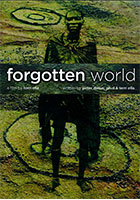
Forgotten World 2015
Distributed by Icarus Films, 32 Court St., 21st Floor, Brooklyn, NY 11201; 800-876-1710
Produced by Terri Ella
A film by Terri Ella
DVD , color, 52 min.
General Adult
Africa, Anthropology, Archaeology, Geography, Land Use, History
Date Entered: 10/05/2016
Reviewed by Sharadha Natraj, University of Wisconsin Milwaukee, School of Architecture and Urban PlanningThe Mpumalanga Escarpment in northeastern South Africa is the location of some of the most spectacular highlands in the world. Lush green forests carpet vast expanses, with cliffs and gorges carving the landscape. This area, overlooked by many of the tourists who pass by on their way to the Kruger National Park, is the setting for Forgotten World.
Sweeping aerial views reveal the stunning landscapes inhabited by the Bakoni people between 1500 and 1820, and the remnants of stone structures they left behind. While several theories have been propagated to explain the existence of the structures, they are mainly rooted in the racist perception that indigenous African people could not have possibly had sophisticated systems for construction, social structures or agriculture. More recently, new understanding has helped reframe the perception of such vibrant and changing societies, and light is being shed on these communities and sites that have been ignored and neglected.
This multifaceted film shows researchers from universities in South Africa from the fields of history, archaeology and geography, as they work together to decode the history of the Bakoni and understand their land use patterns, agricultural practices and society. They analyze the circles formed by stone ruins, rock engravings and the landscape of the area, and study the vast number of oral histories that were compiled by missionaries in the 19th century, their findings coalescing into a holistic view of the lives of the Bakoni. Forgotten World effectively showcases the success to which interdisciplinary collaboration can lead. Archaeology, history and geography intertwine, each enhancing the understanding of the other, enriching discoveries and elaborating on growing knowledge. It is a thought-provoking and urgent call to preserve ancient sites such as these in South Africa for coming generations.